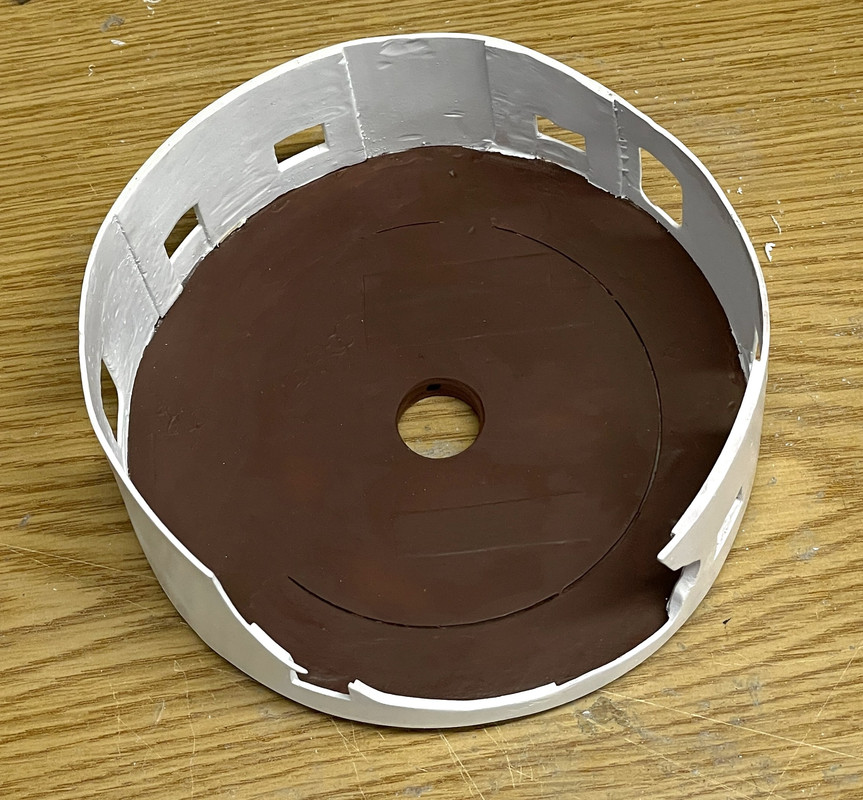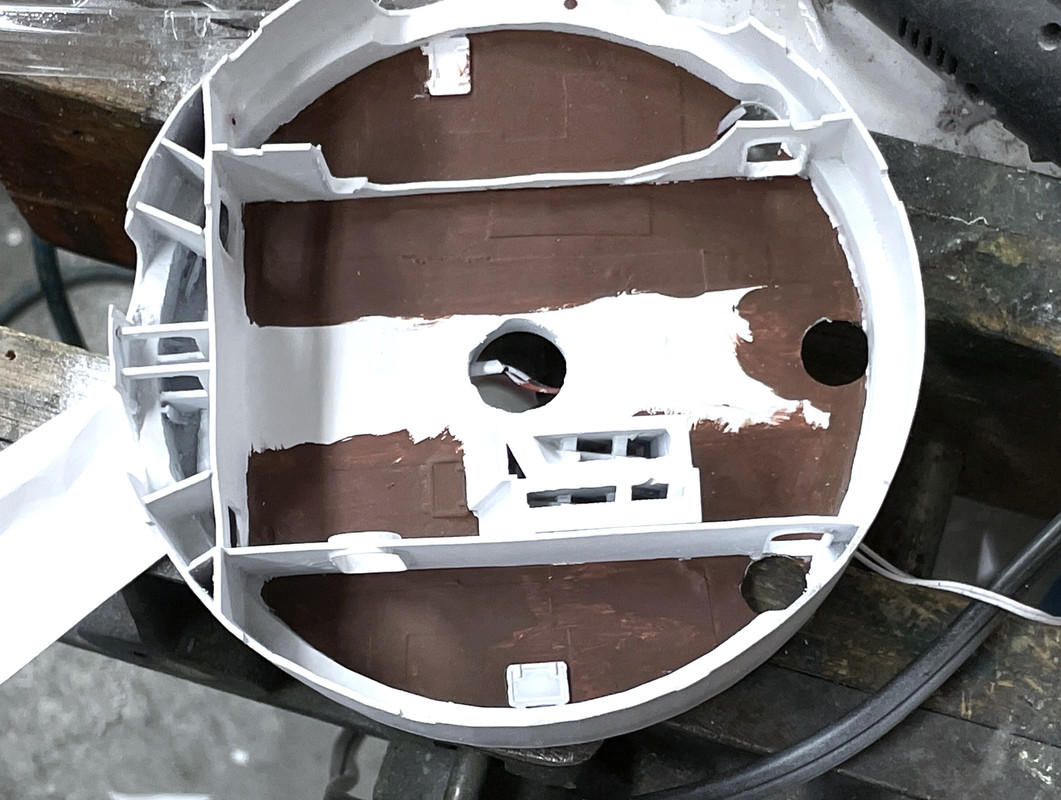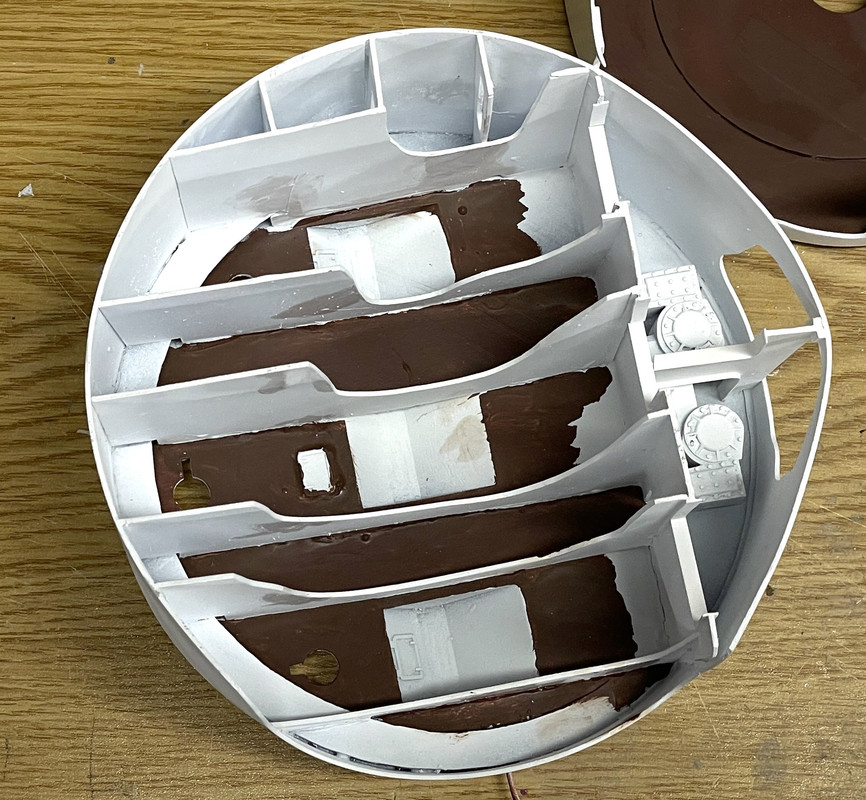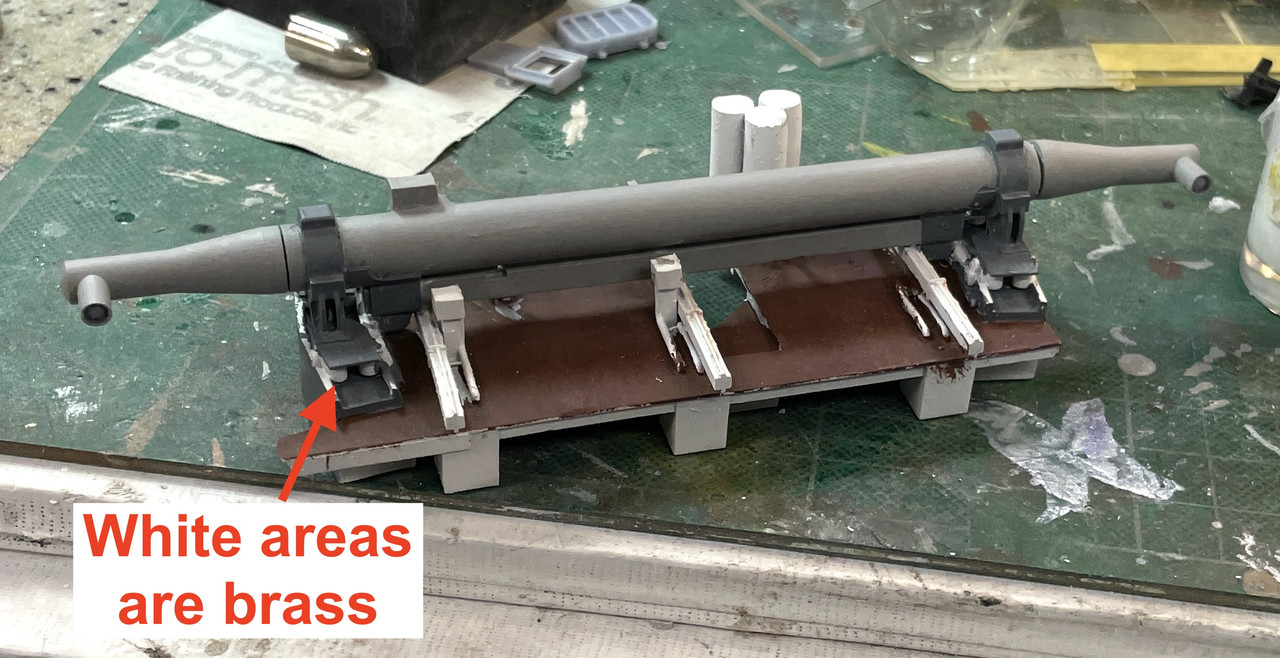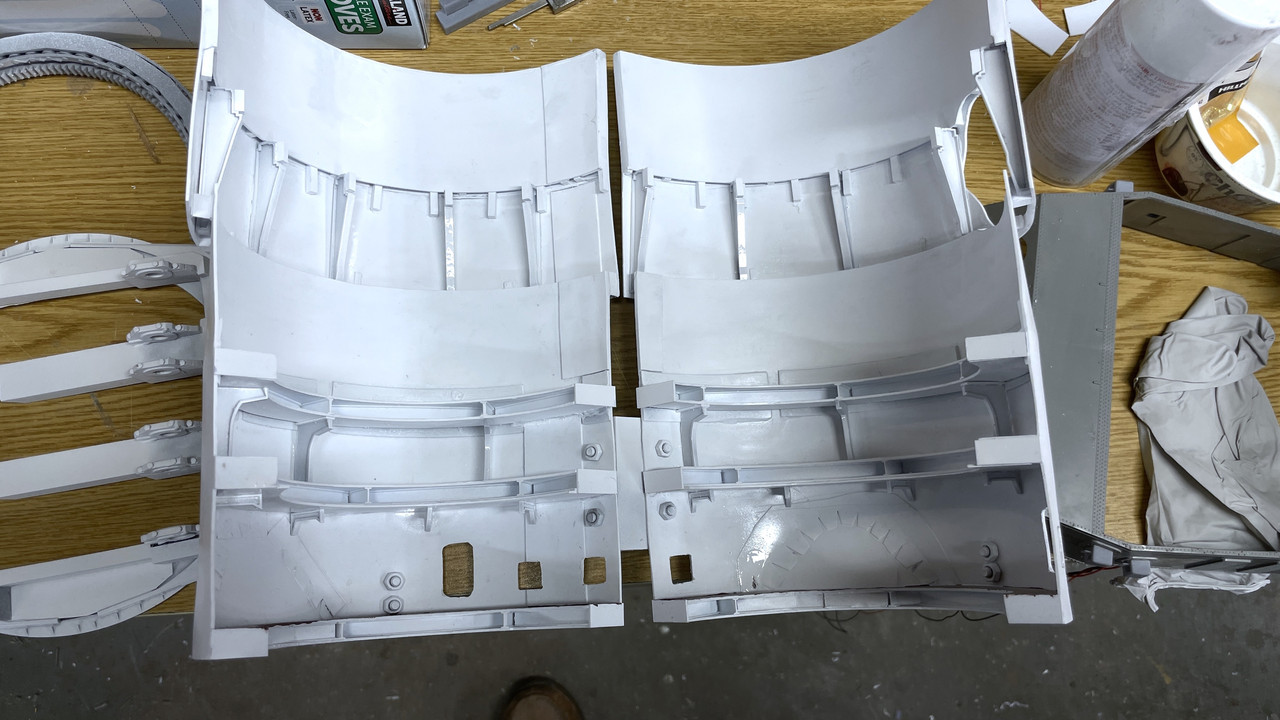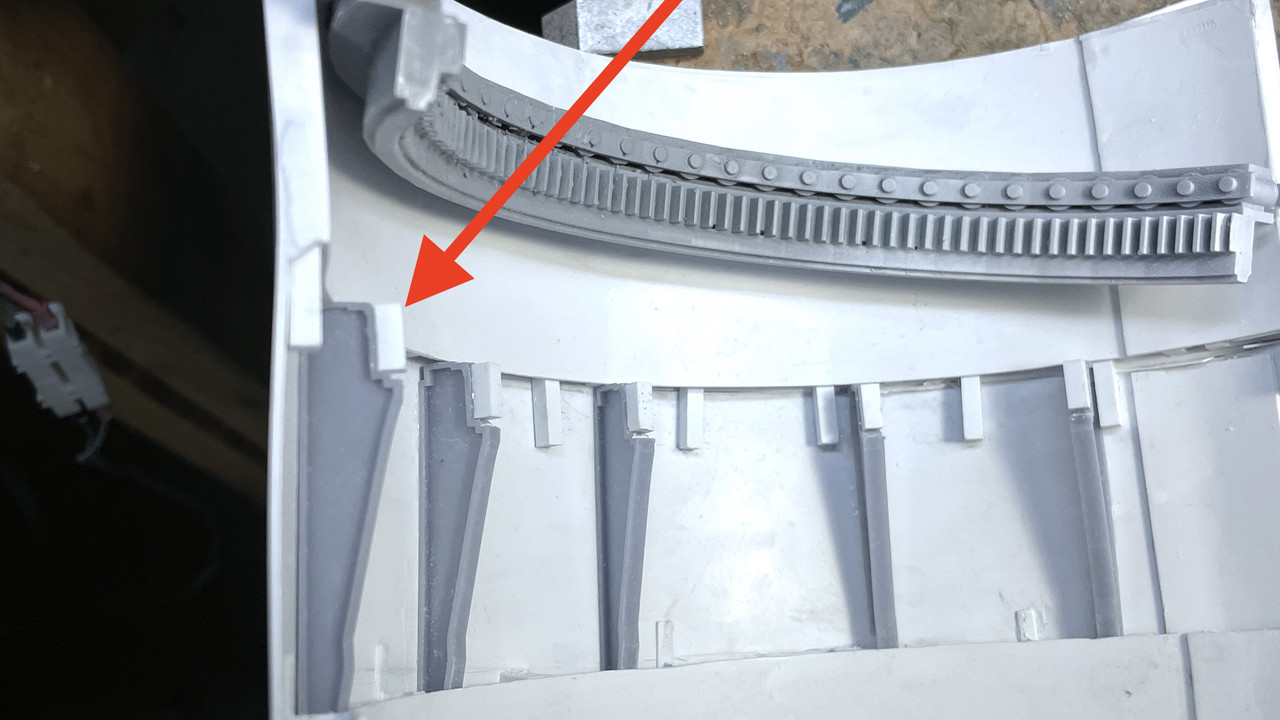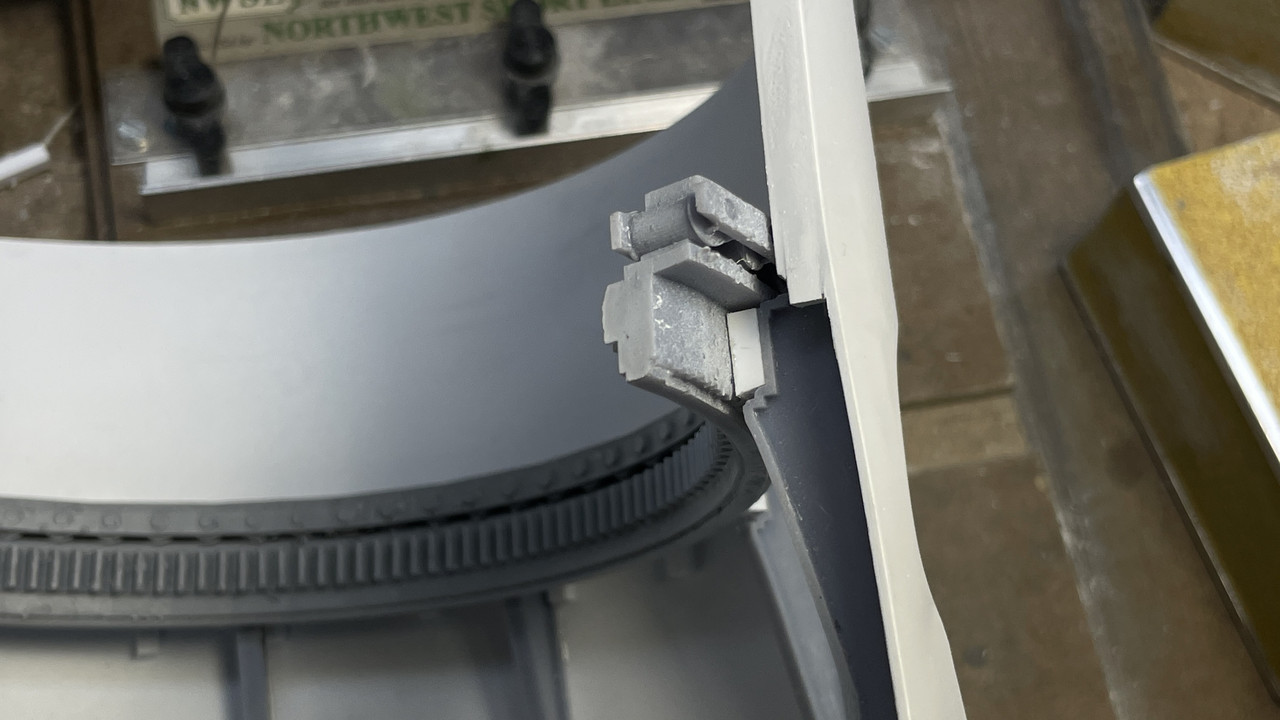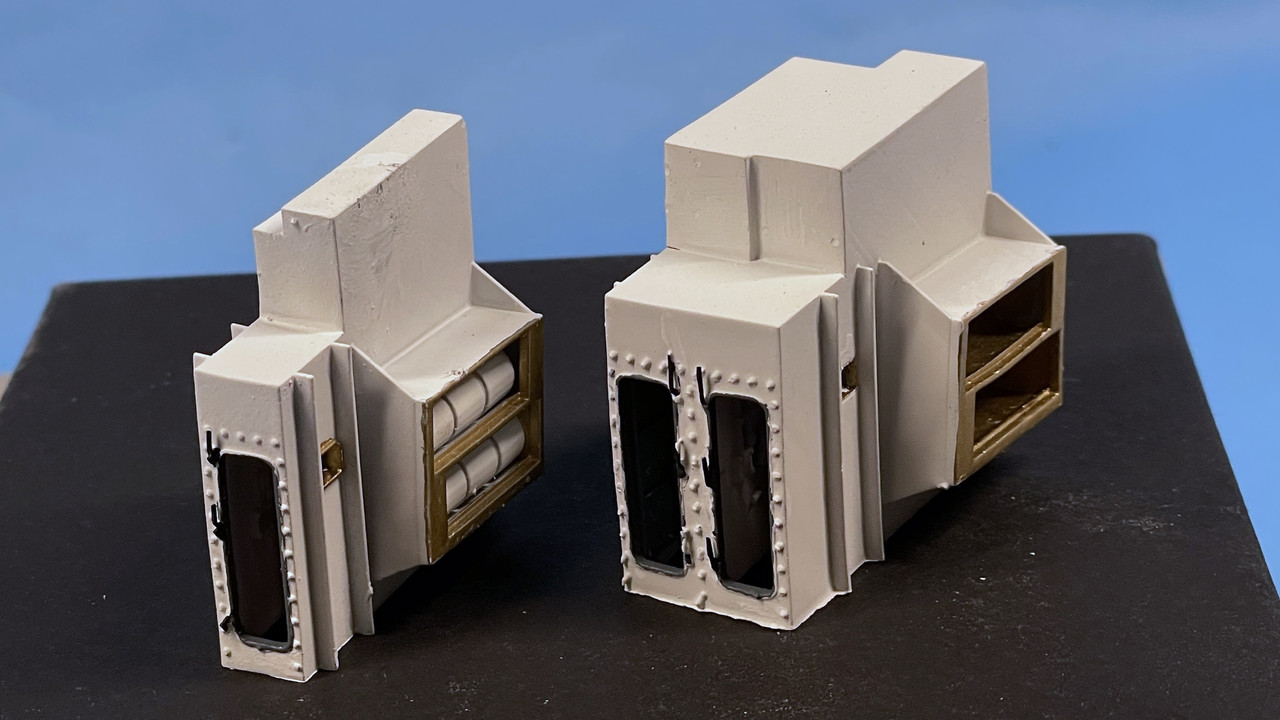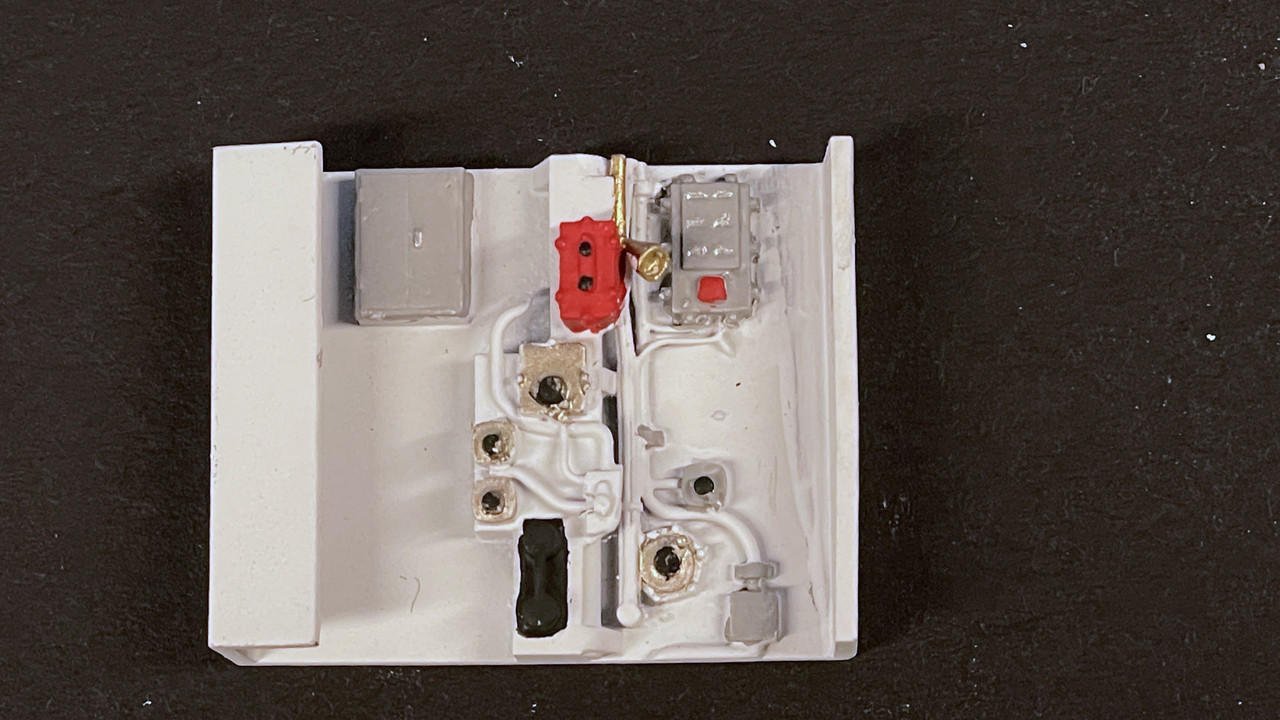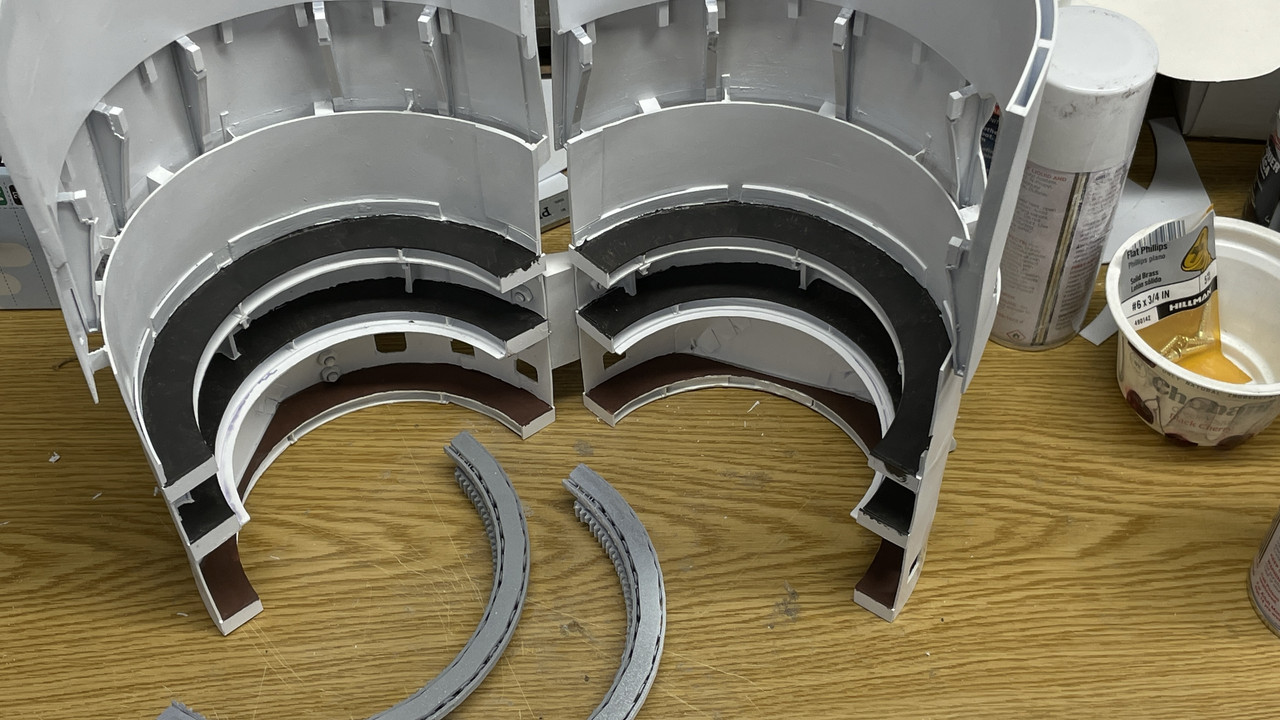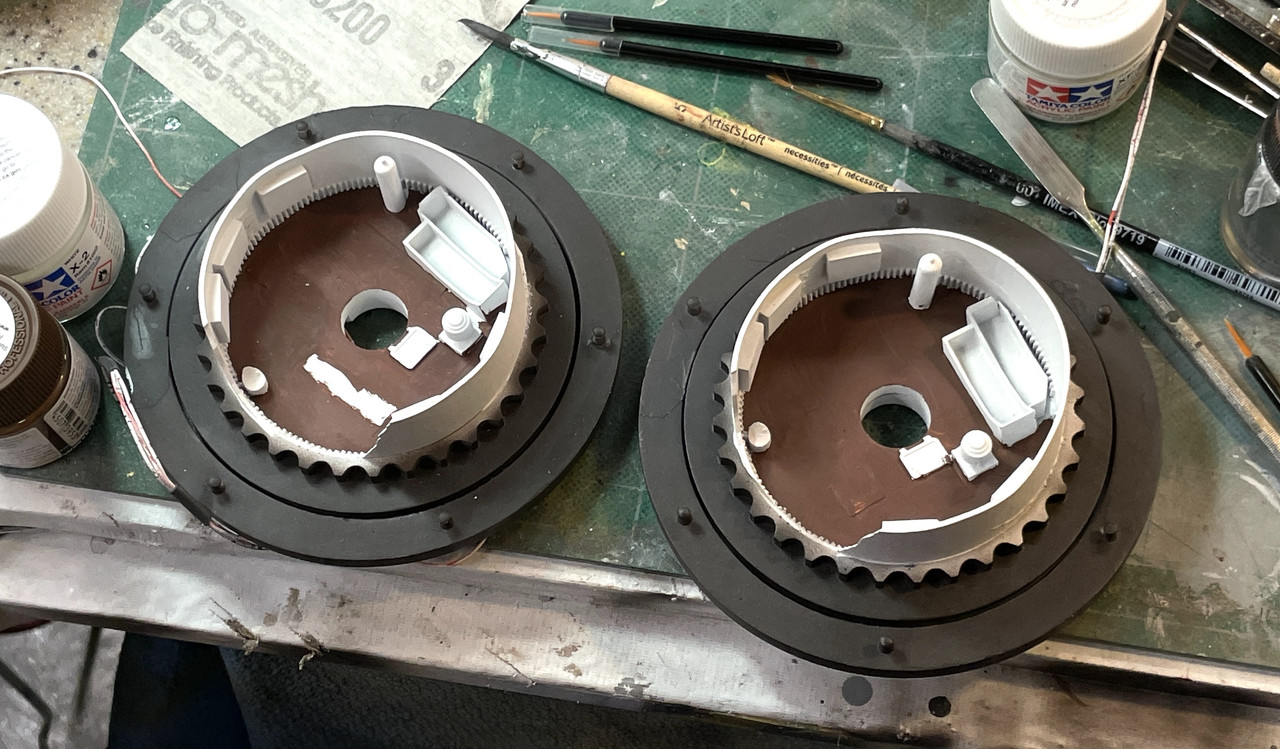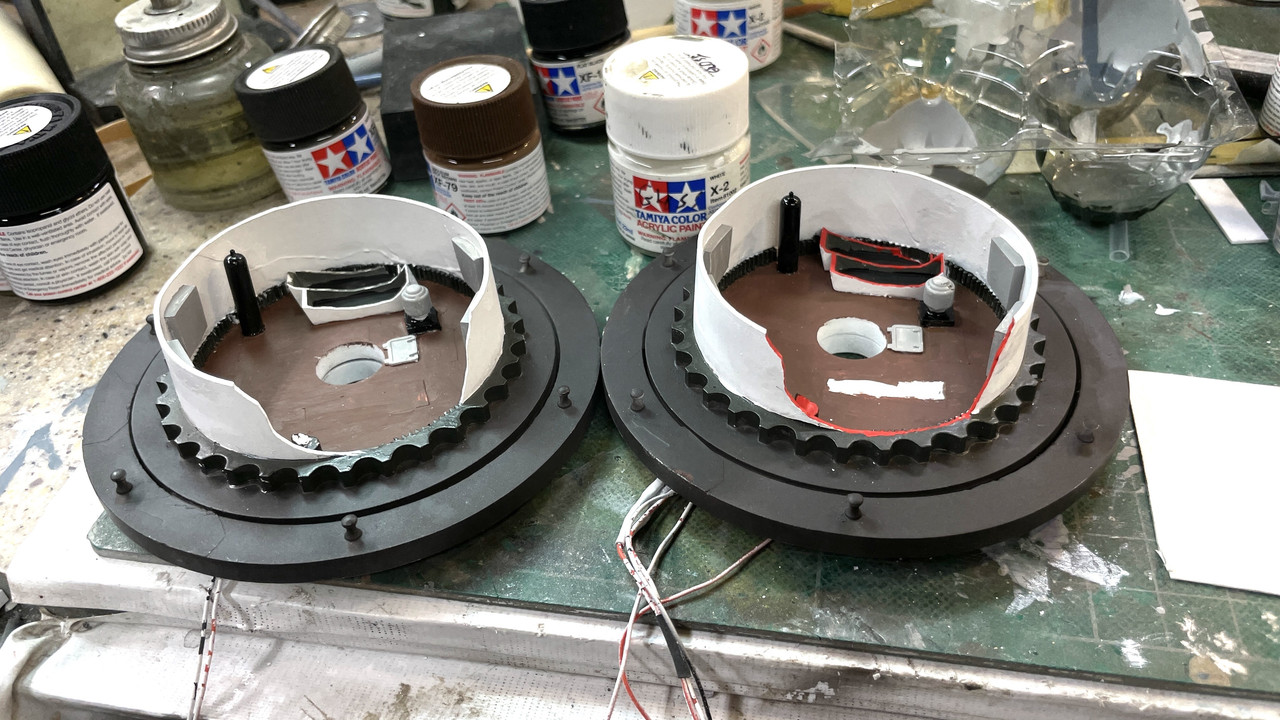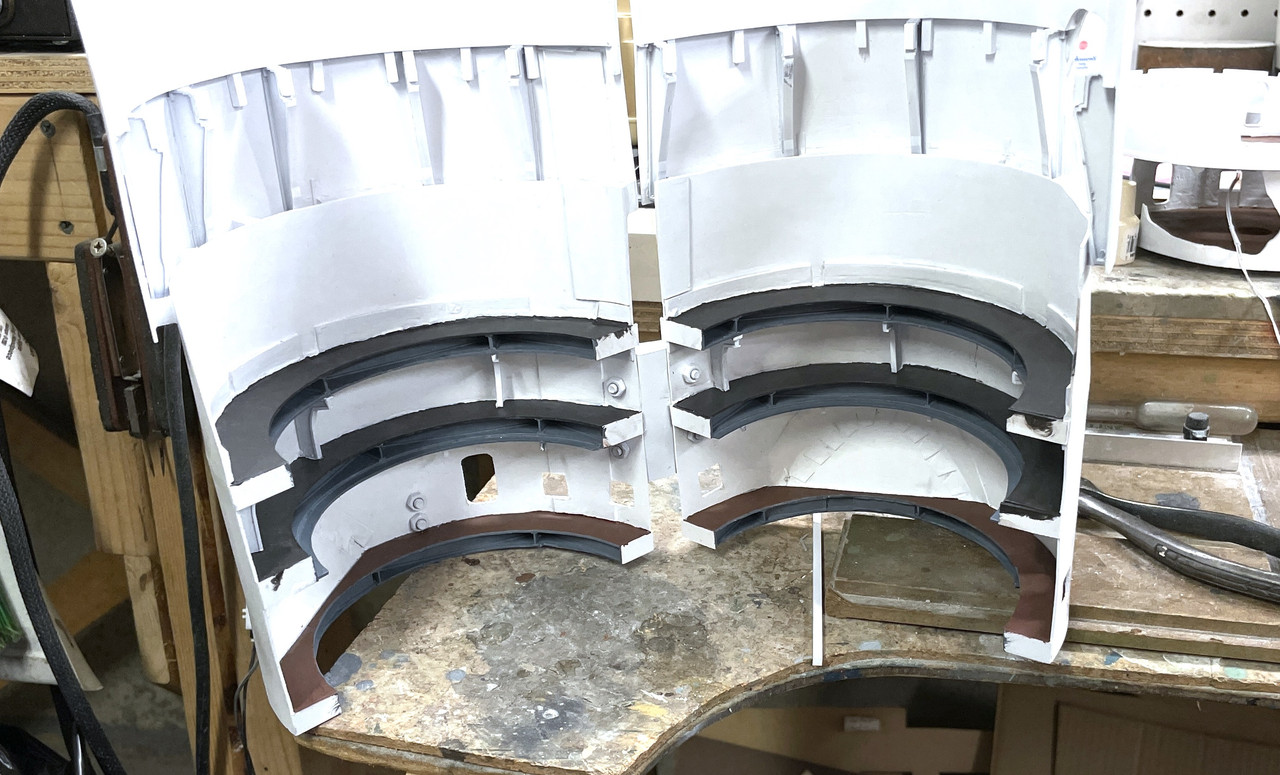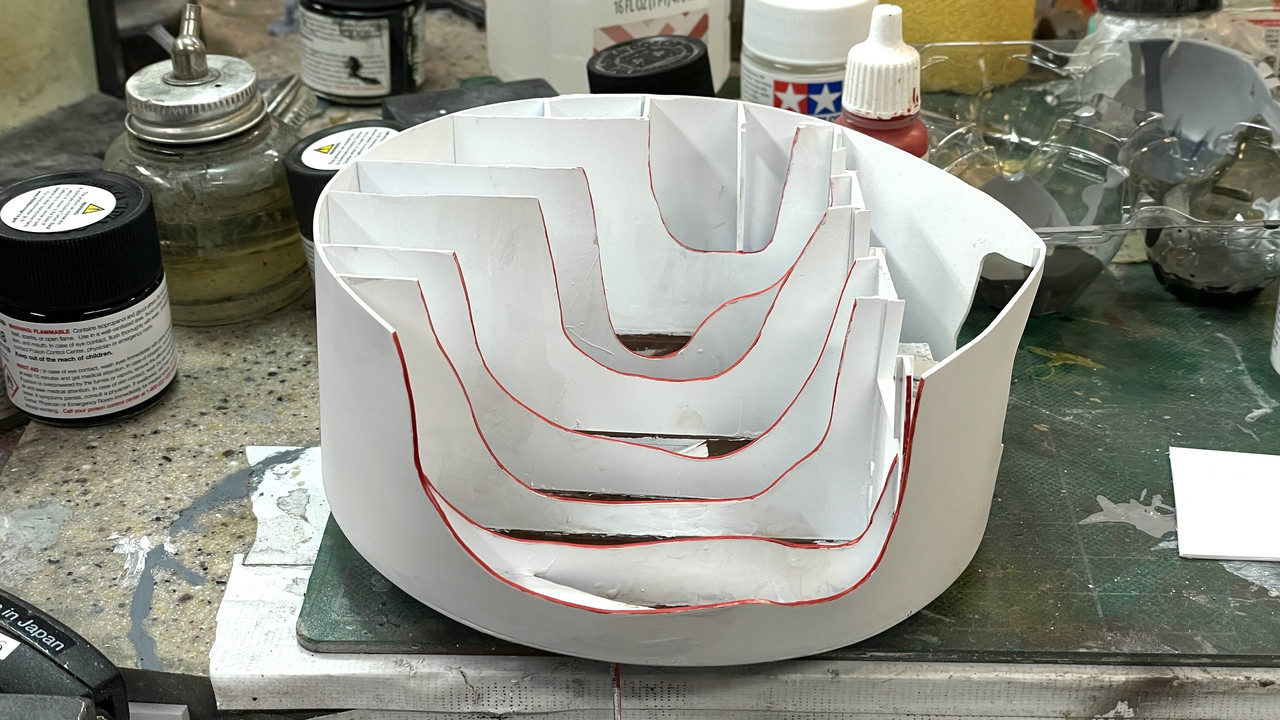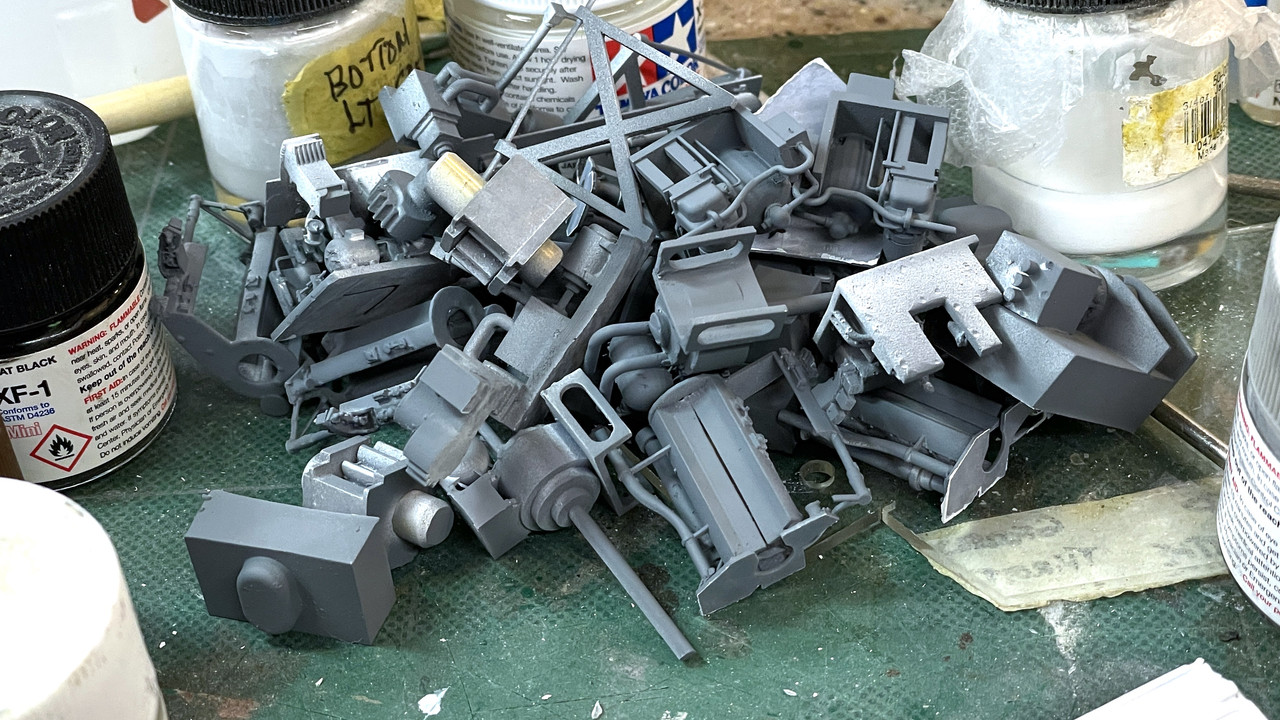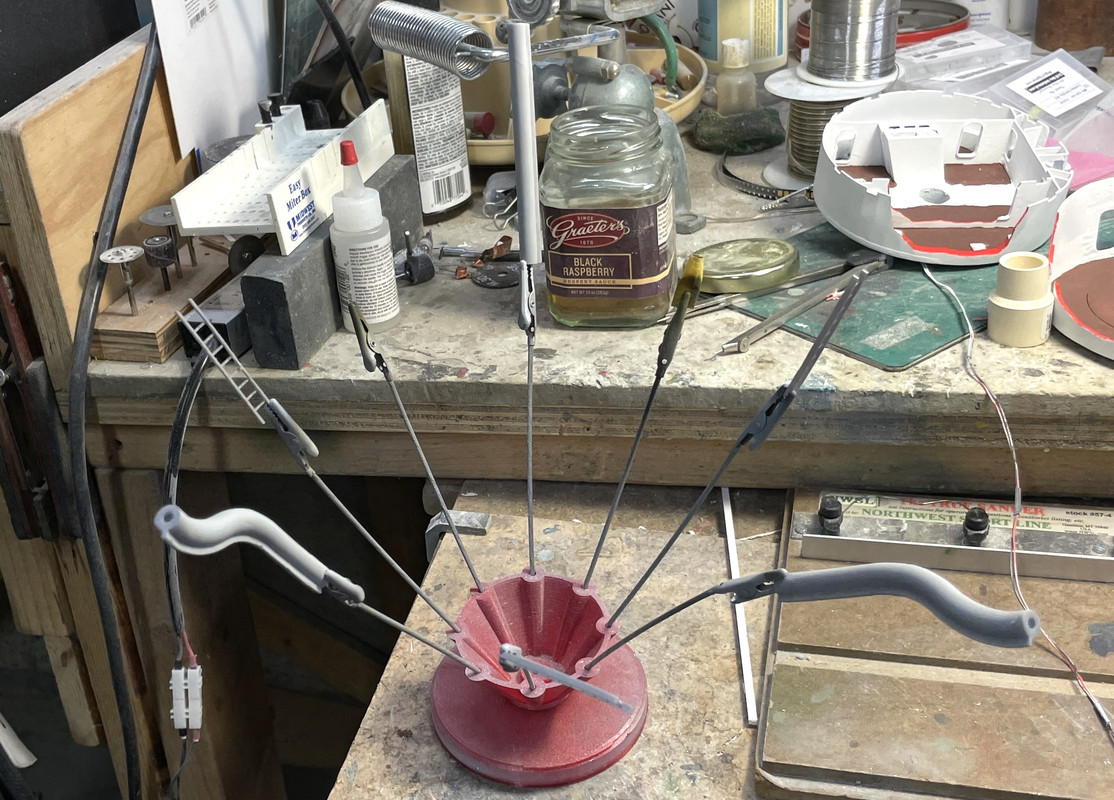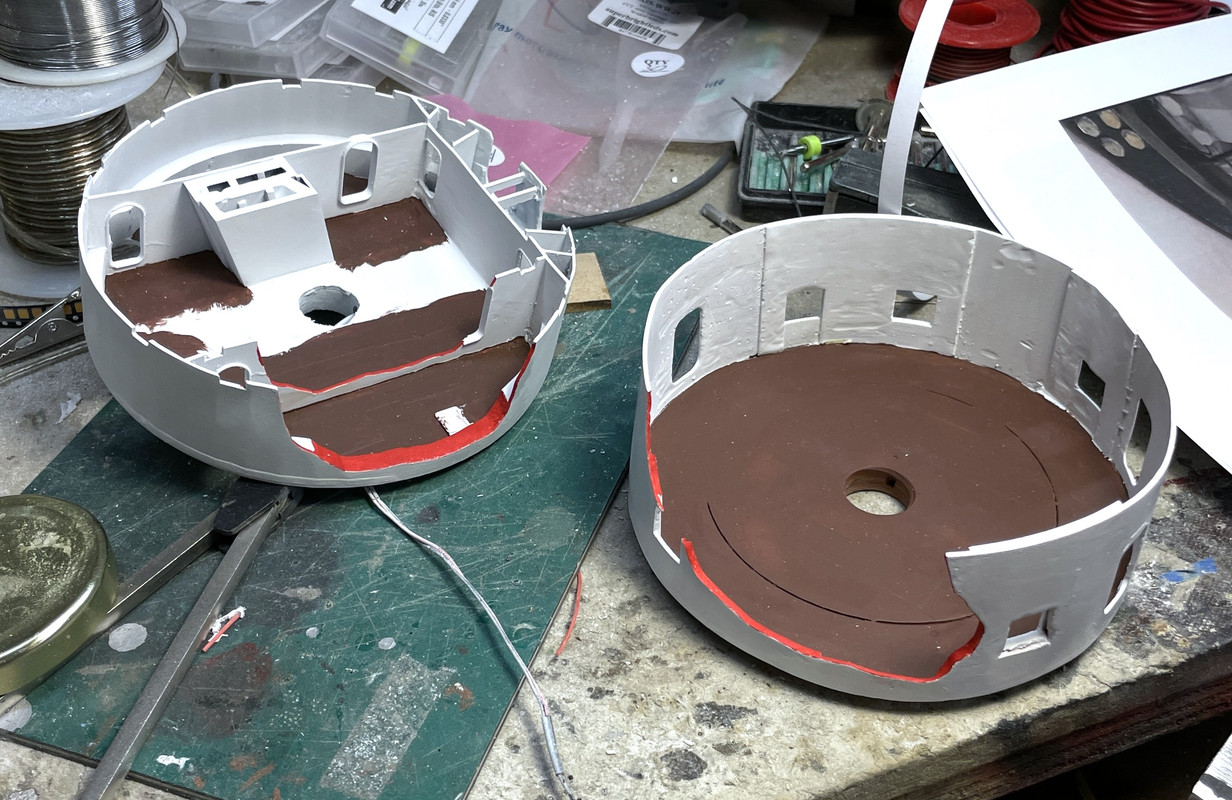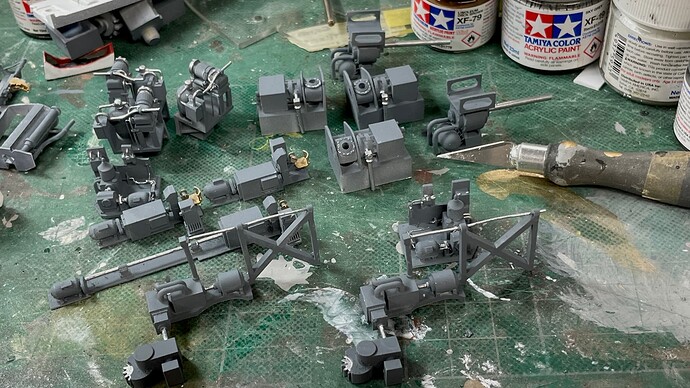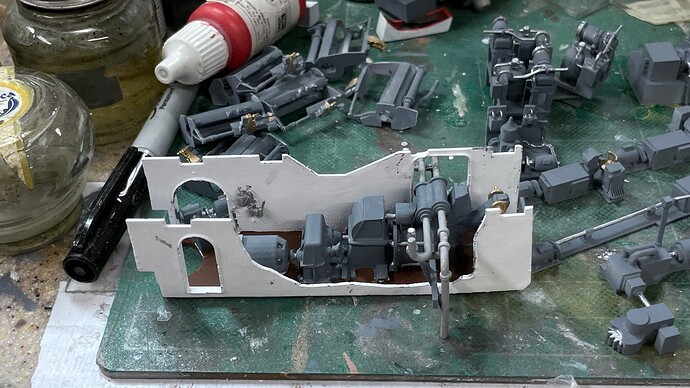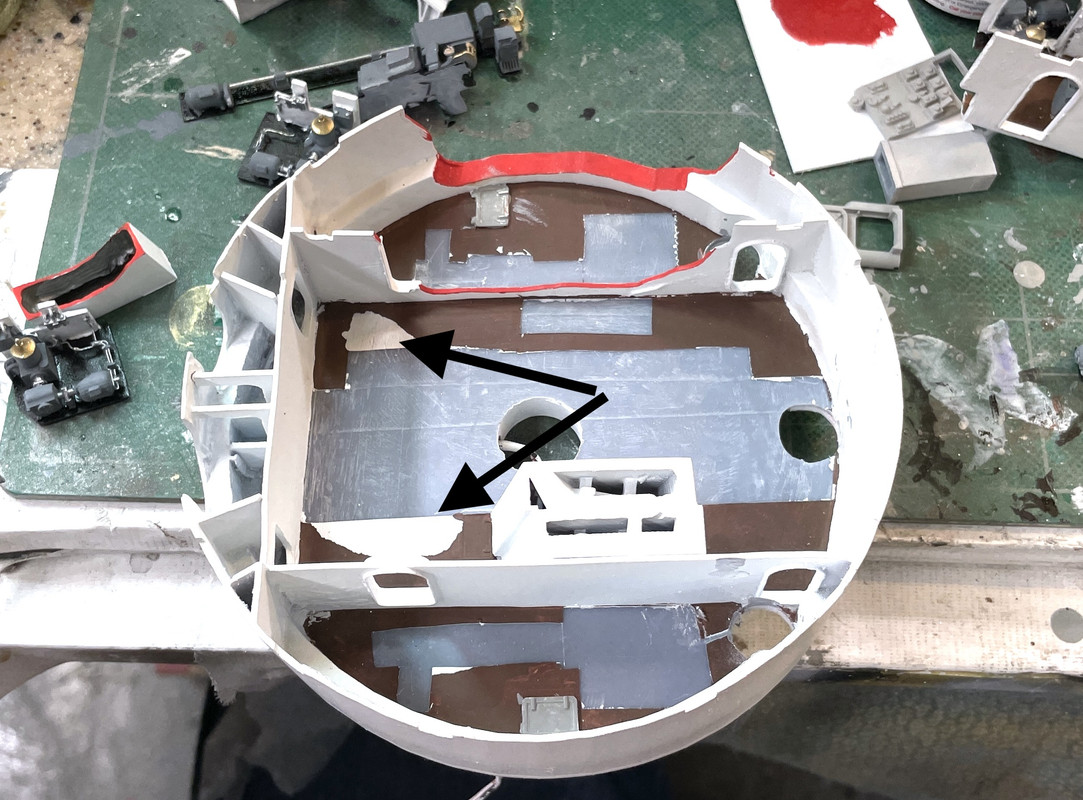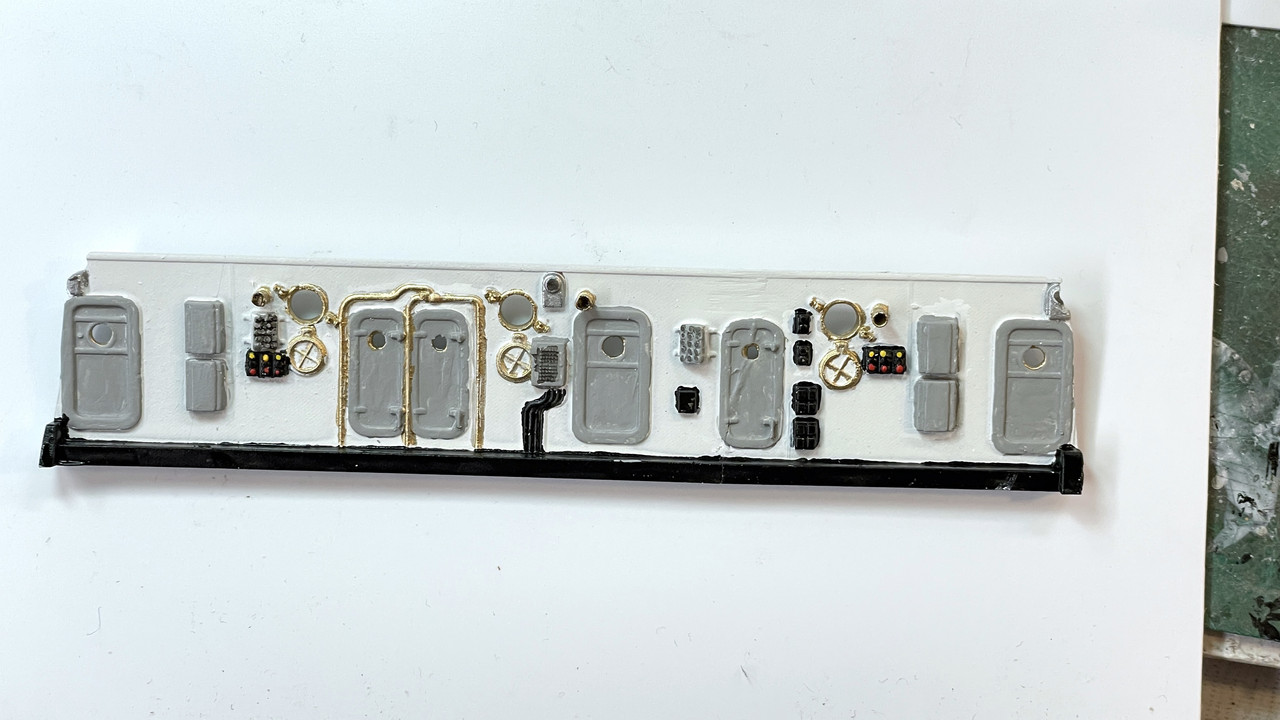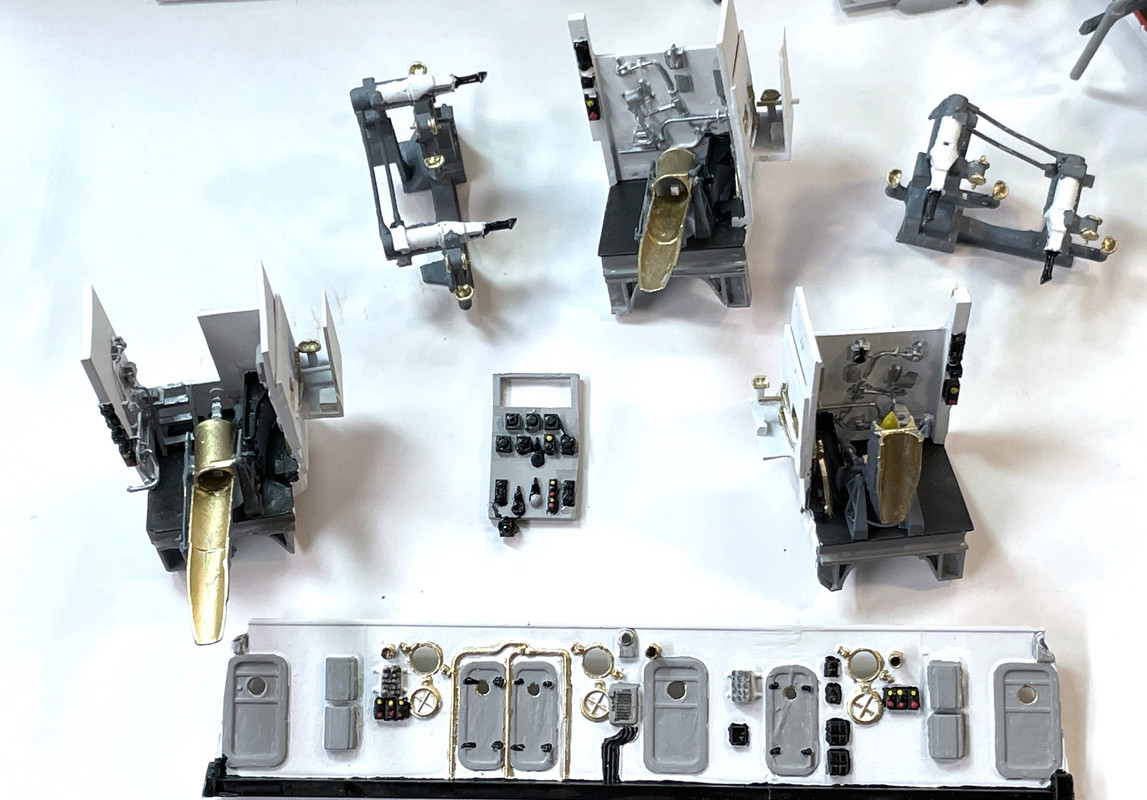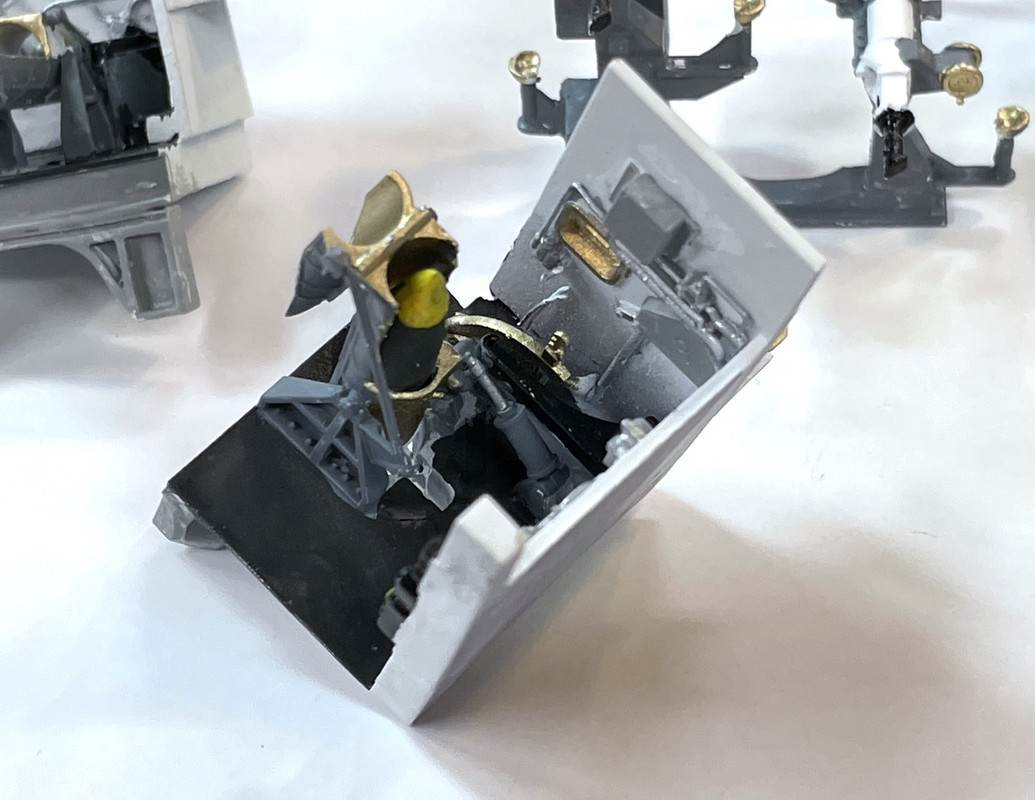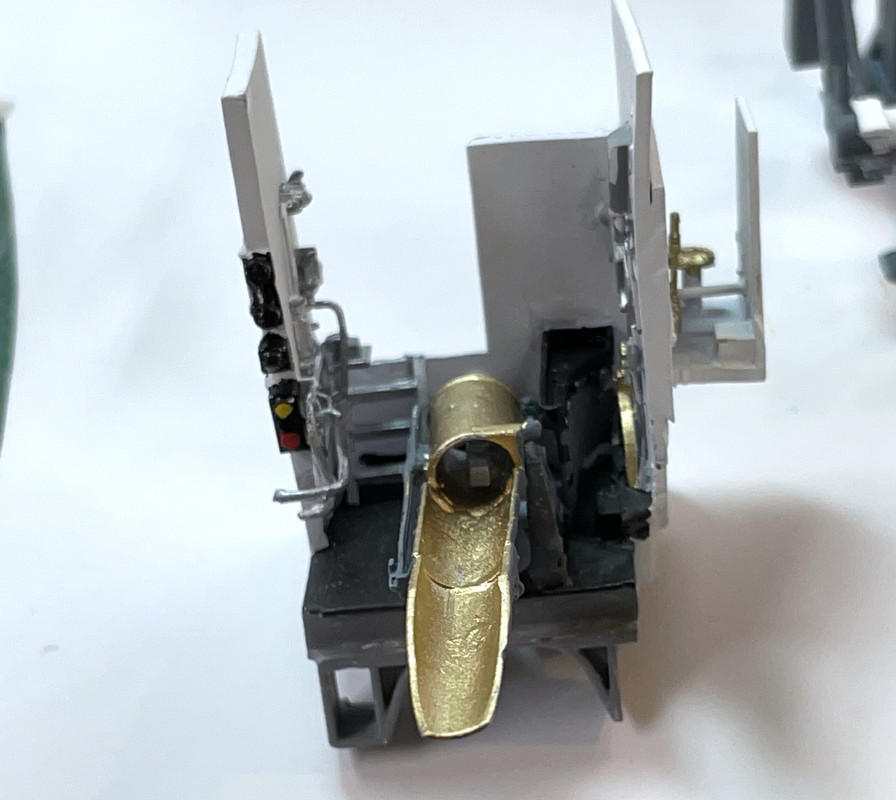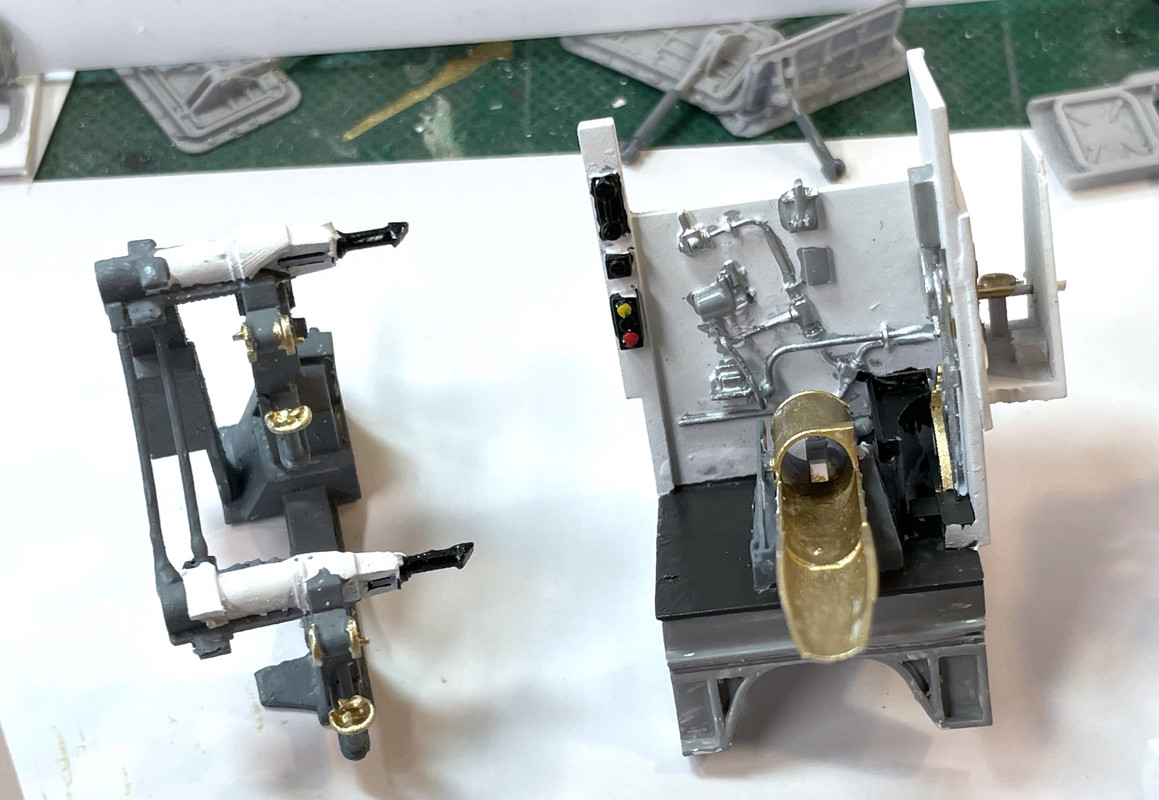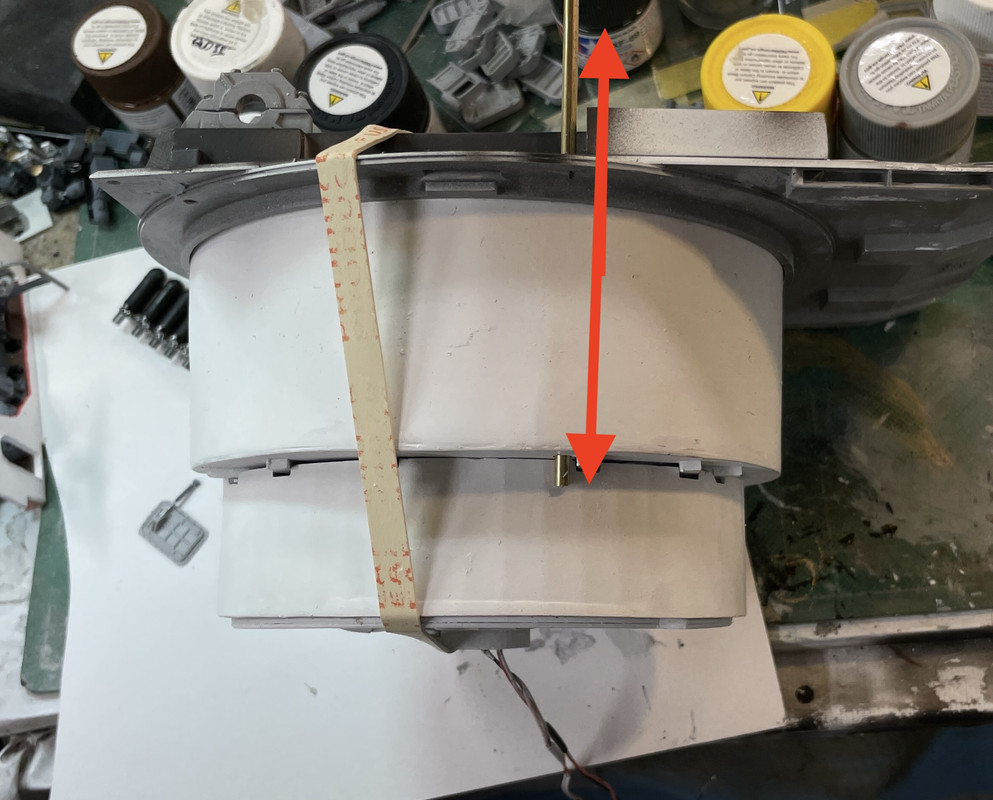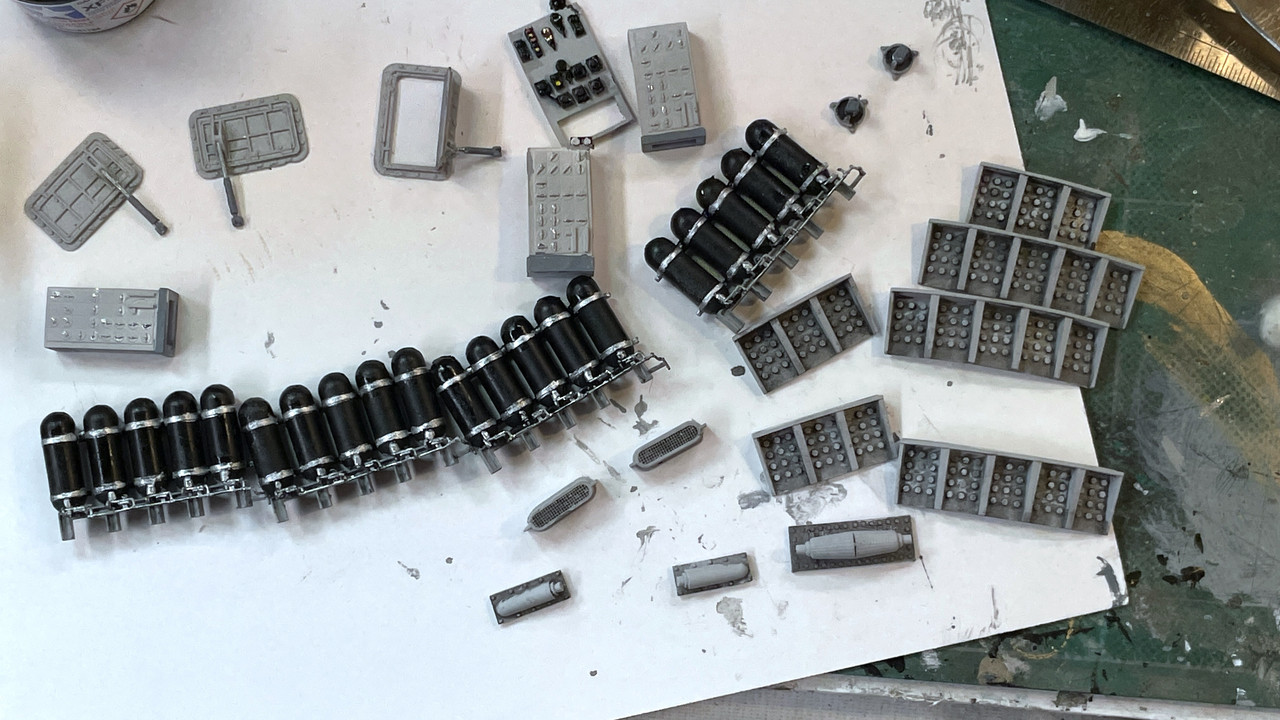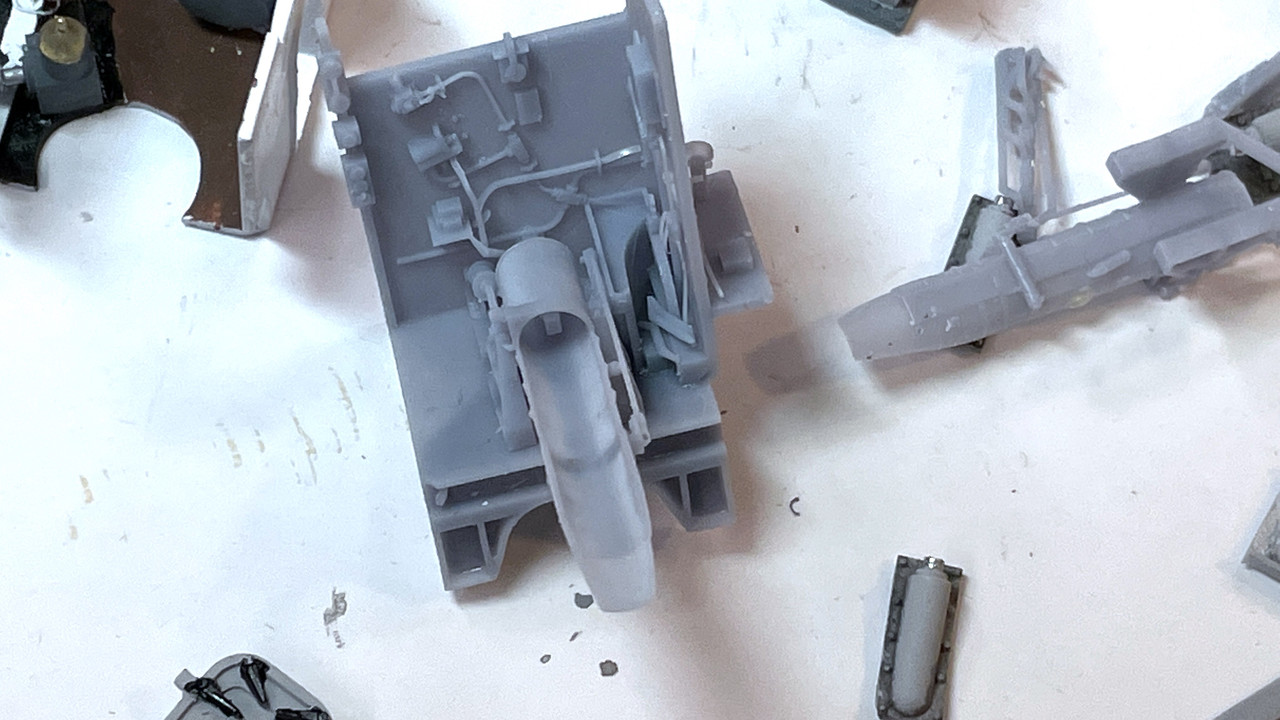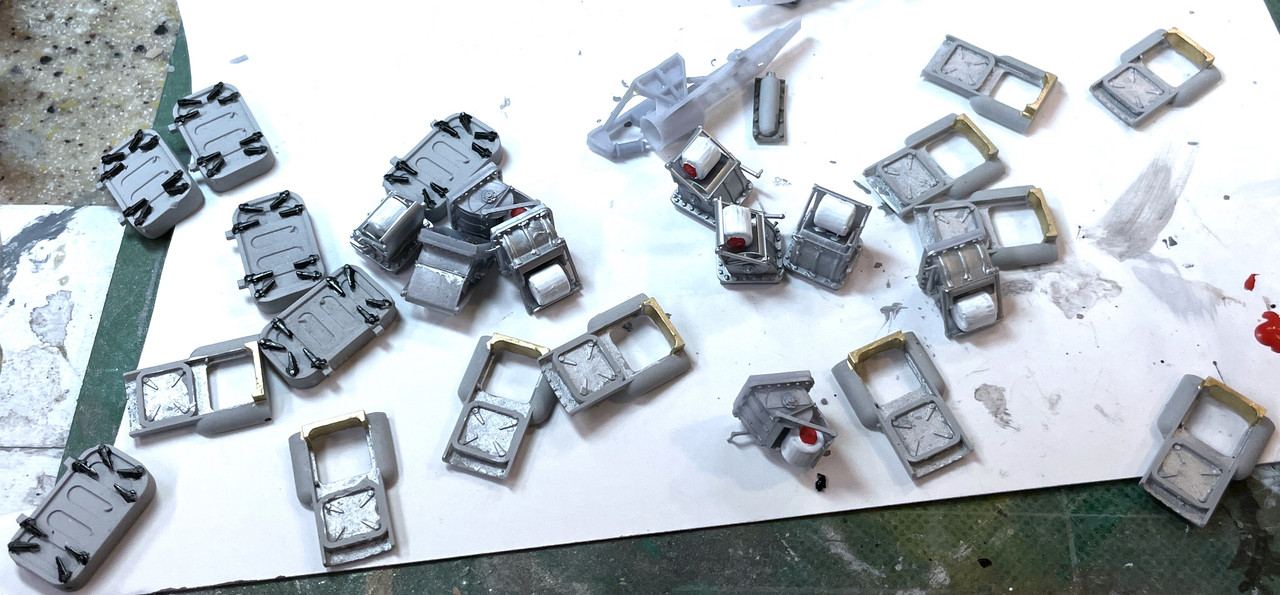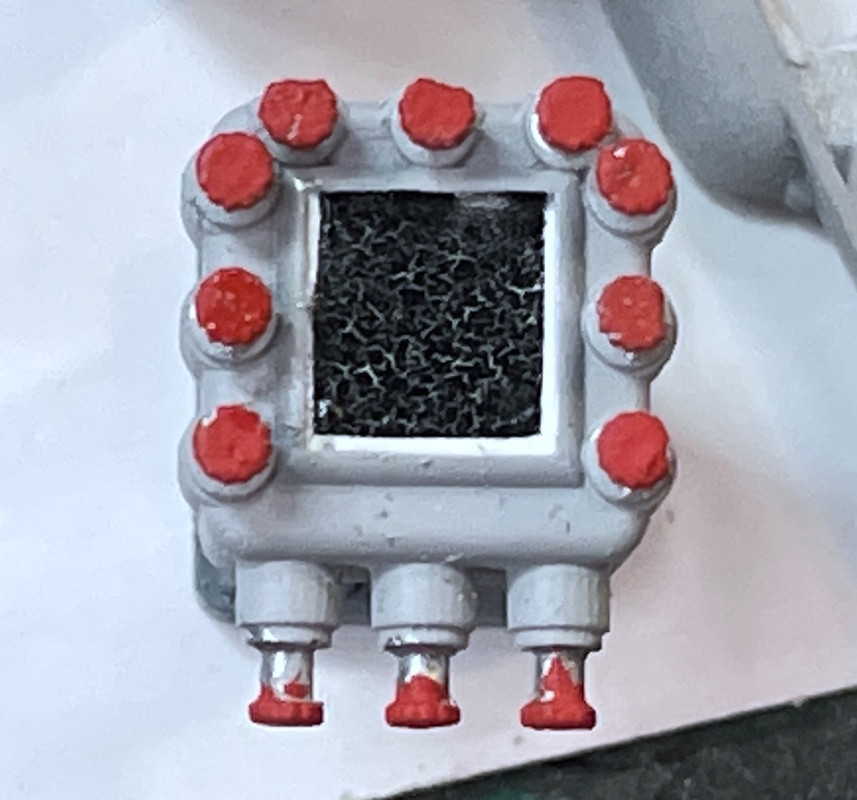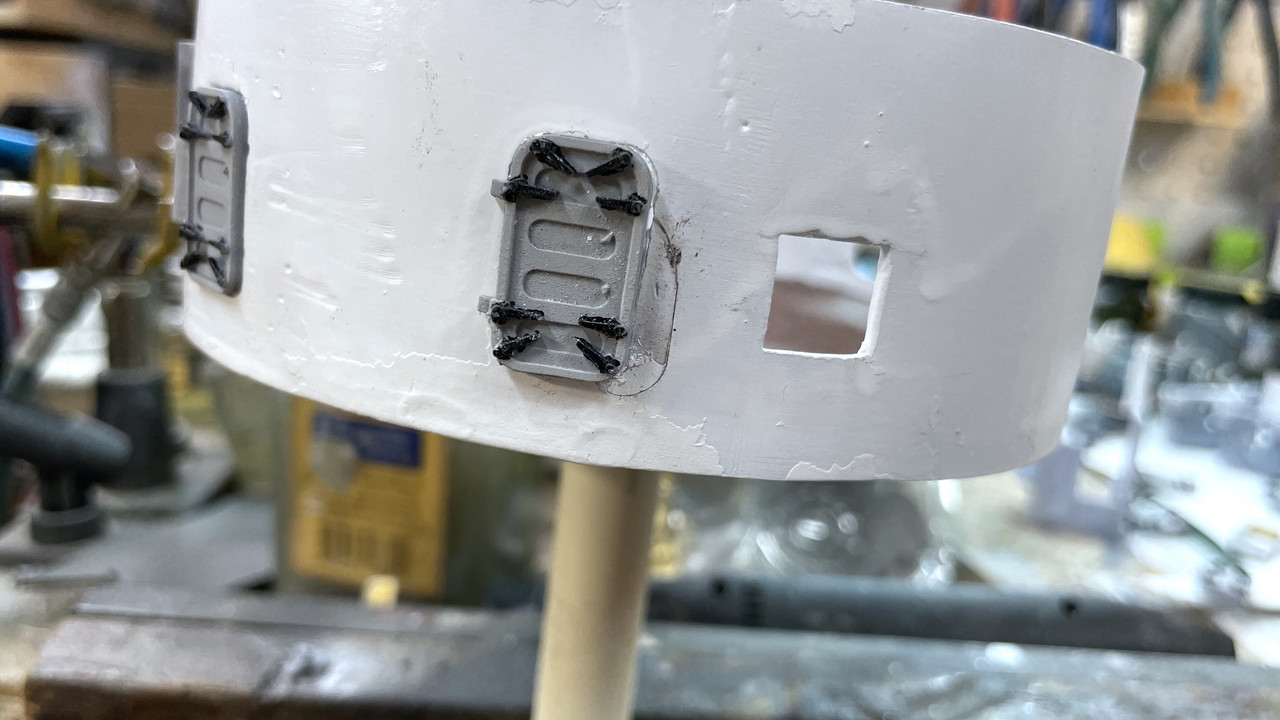Thanks guys for the kind thoughts.
My wife is on the mend. She feels like she’s been in a car wreck, but if 3 Advil make it feel better, she’s not seriously injured. Nothing’s broken (other than her spirit) and she will be back to her full, energetic self.
This is the face of the Ballistic Computer in the Officer’s Booth. It’s a complicated mess of dials and pointers that when set correctly, let the big guns hit what we want them to hit. There’s one of these in each turret and then two more in the fore and aft plotting rooms. Lots of redundancy. I took this image at the Big J visit in July.
I scaled it to fit the face of the model computer that I printed, and printed out a sheet of them.
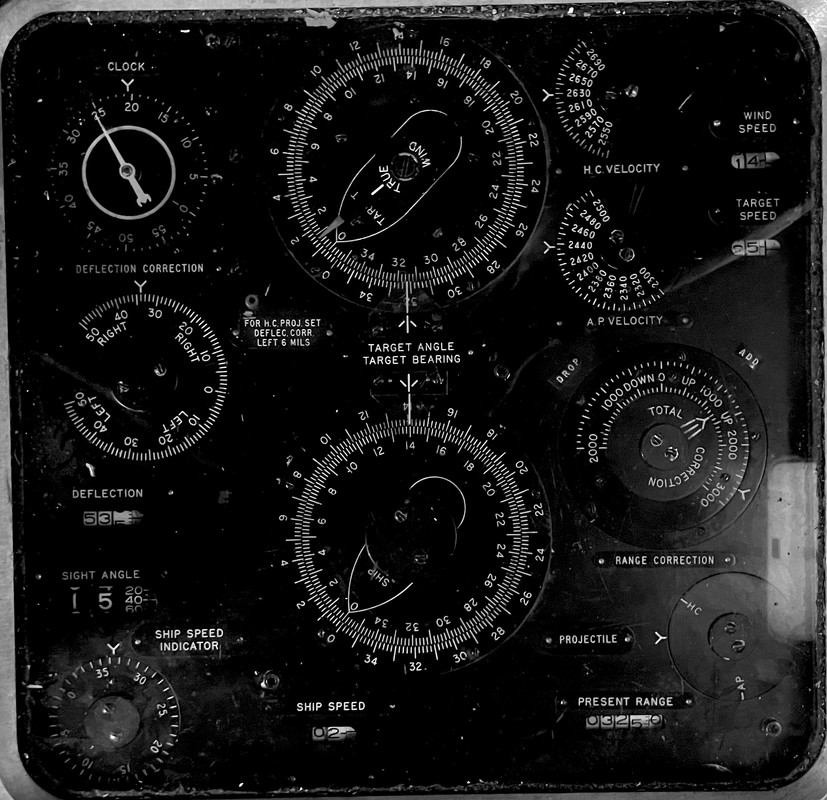
Here’s the output. I don’t have CorelDraw anymore, but have InkScape, which is also a vector drawing program. The nice thing about vector drawing is fidelity does not change regardless of how small or big you make the drawing.
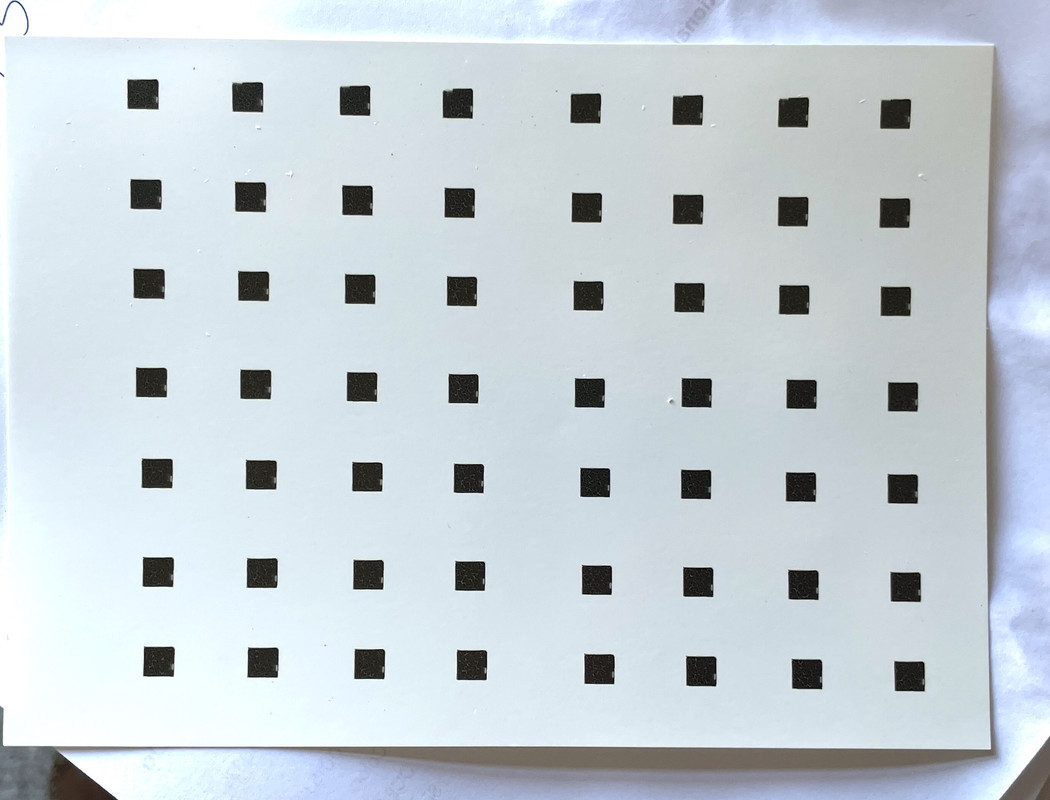
It looks like there’s nothing there, but the printer actually resolved something. Unfortunately, you can’t see it with the naked eye. In other words I’ve actually created detail that isn’t visible to humans without some serious magnification.
This is a close up of the decal. The details really aren’t all that discernable, but there’s something there.

Since you can’t see any of this, I’m not upset by the distortion. It will be placed on this lovely little detail which I finished painting today. The decal is printed out on clear decal film so for any of the white details to show I needed a white background. Since it needed to be gloss anyway for good adhesion, I painted it with gloss white. I’ll apply the decal tomorrow.
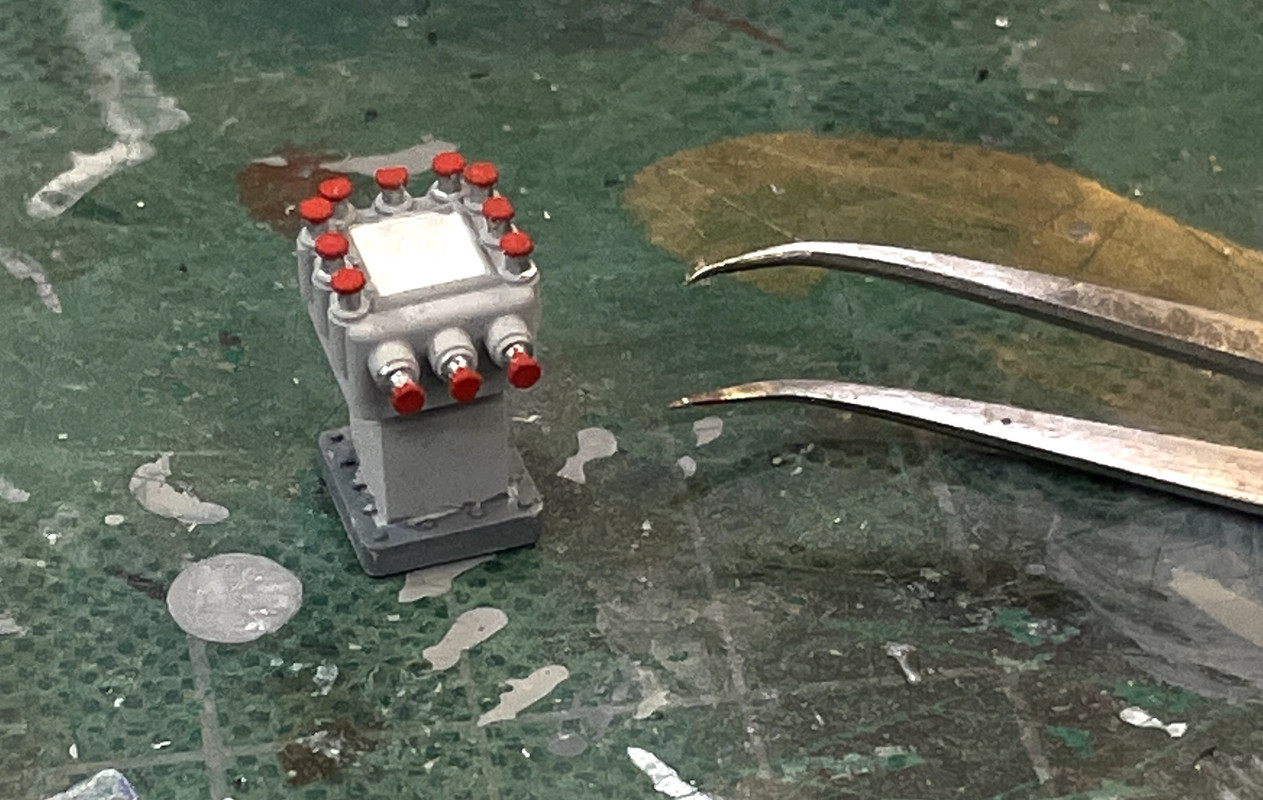
I completely finished the first batch of added details, the machinery ones. Lots of going back and forth with various colors to get the color breaks as good as I could. My hands aren’t so steady… it’s not age related. They never were particularly steady. Thankfully, my son’s, the eye surgeon, and son in law’s, the orthopedic surgeon, hands are steady as a rock.
The tops of the oil resevoirs that have that topknot are now brass. The cable reel that hoists the powder carts are black. I will use some E-Z Line to simulate the cable during final assembly. The center section is fully done and ready for installation into the electric deck.
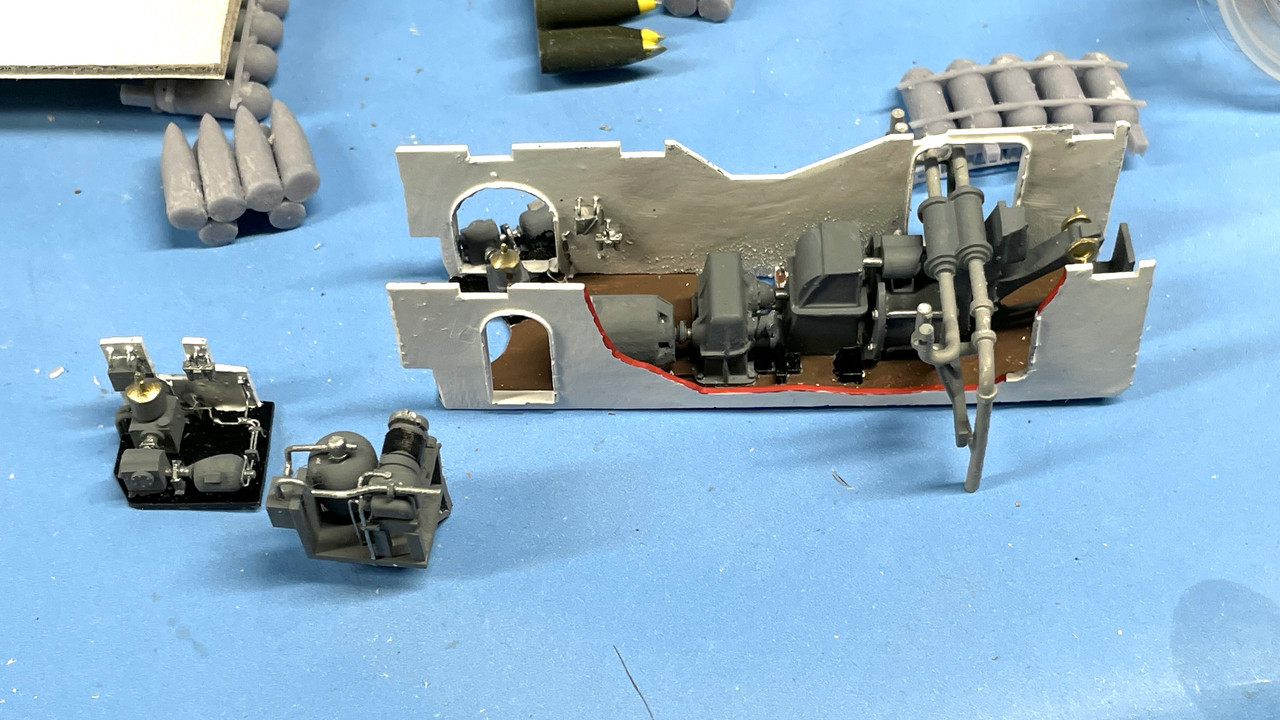
I started painting the rear gun compartments. These are nice challenging model painting tasks. I printed the spanning trays way to thin… almost a scale thickness. And they kept fracturing at the junction to the thick part. I’ve reprined them, but didn’t change the geometry, and I’m paying for it. I had to CA another break today and am a little squeamish about handling them for fear of breaking them again. If it breaks again, I may have to bite the bullet and redesign the cradle assembly to make that part more robust.
I’m starting with the neutral gray cradle body. The walls stay white which is why I painted them that first. It is really neat that all that piping is actually separate from the walls. Makes painting it more possible.
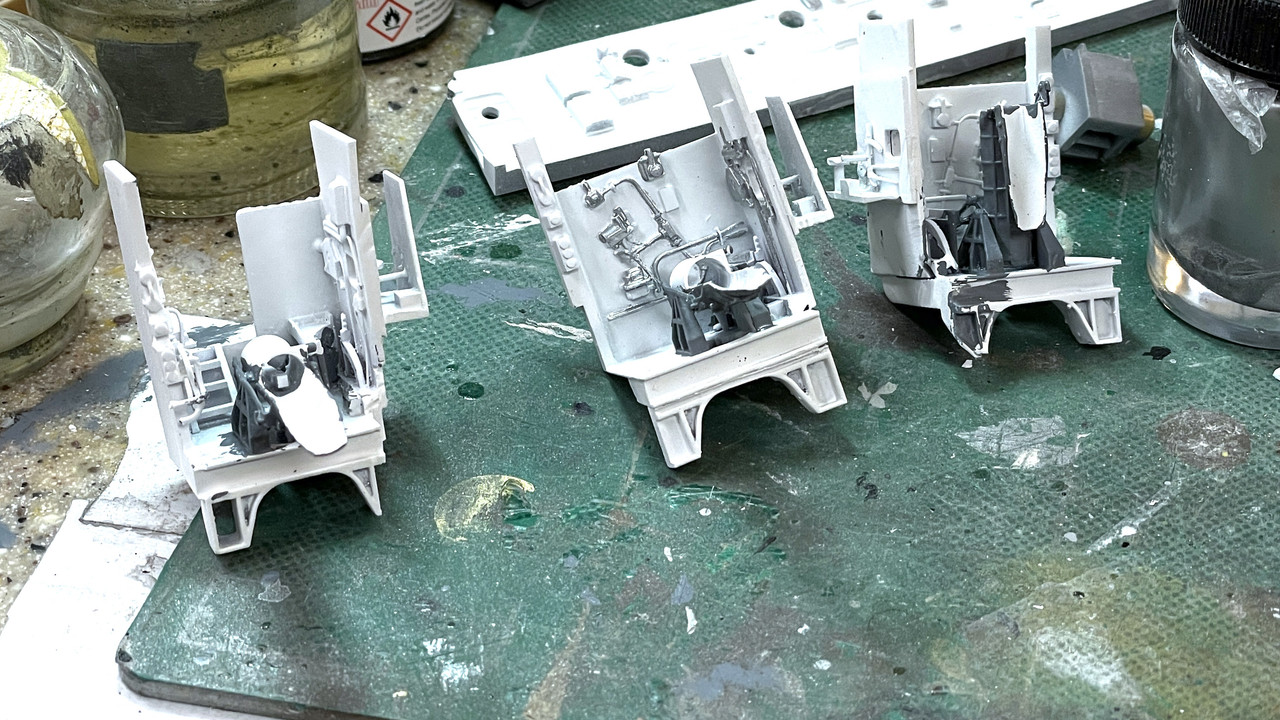
Last thing today was modifying the electric deck’s bottom adding a spacer ring so the projectile hoist on the projectile flat one deck below would properly fit the space. If you remember back a few weeks, I had spent time making the p-flats the same height only to find that the top was being spaced differently due to the large boss on the electric deck’s base. Rather than reprint that projectile flat or individually change the projectile hoists, I just took some scrap styrene centers left over from making the annular decks, and cut an i.d. to correspond to the middle p-flat’s rotating deck. I needed about 0.080" so I laminated two 0.040" rings. I had to relieve the rings where the LEDs were and cut out the projectile trunk’s openings. I used the 3M transfer adhesive tape to cleanly and permanently attach the ring. The ceiling is white so I’m may not even paint this. I tested the projectile hoist’s fit and the spacer works well. All the cutting was done with the 1/16" solid carbide router.
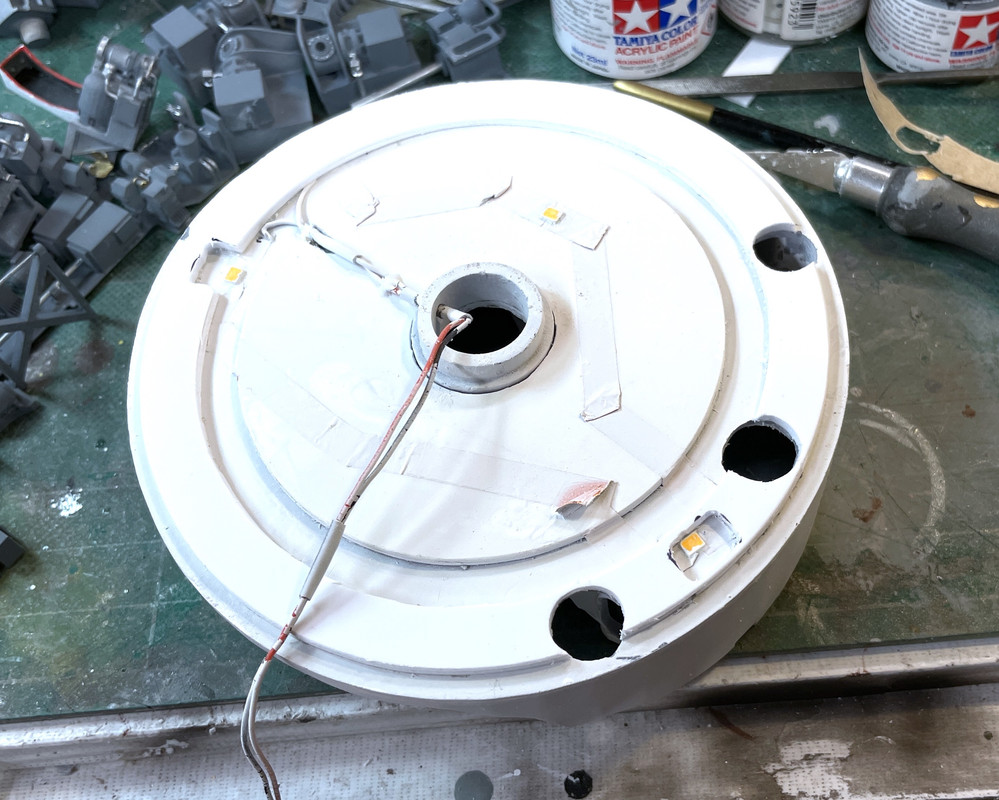
All this detail painting should be done in a couple more work sessions.
